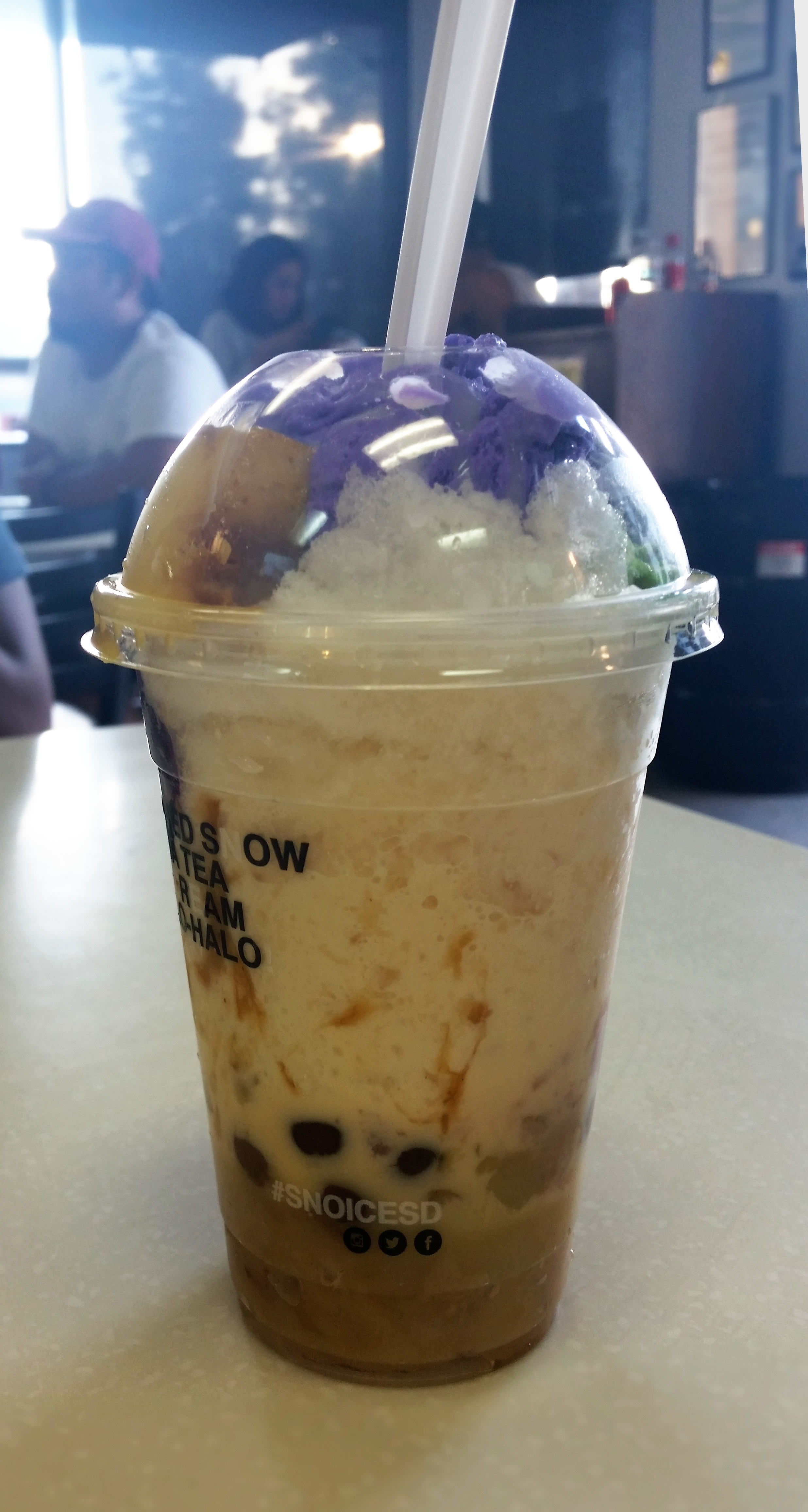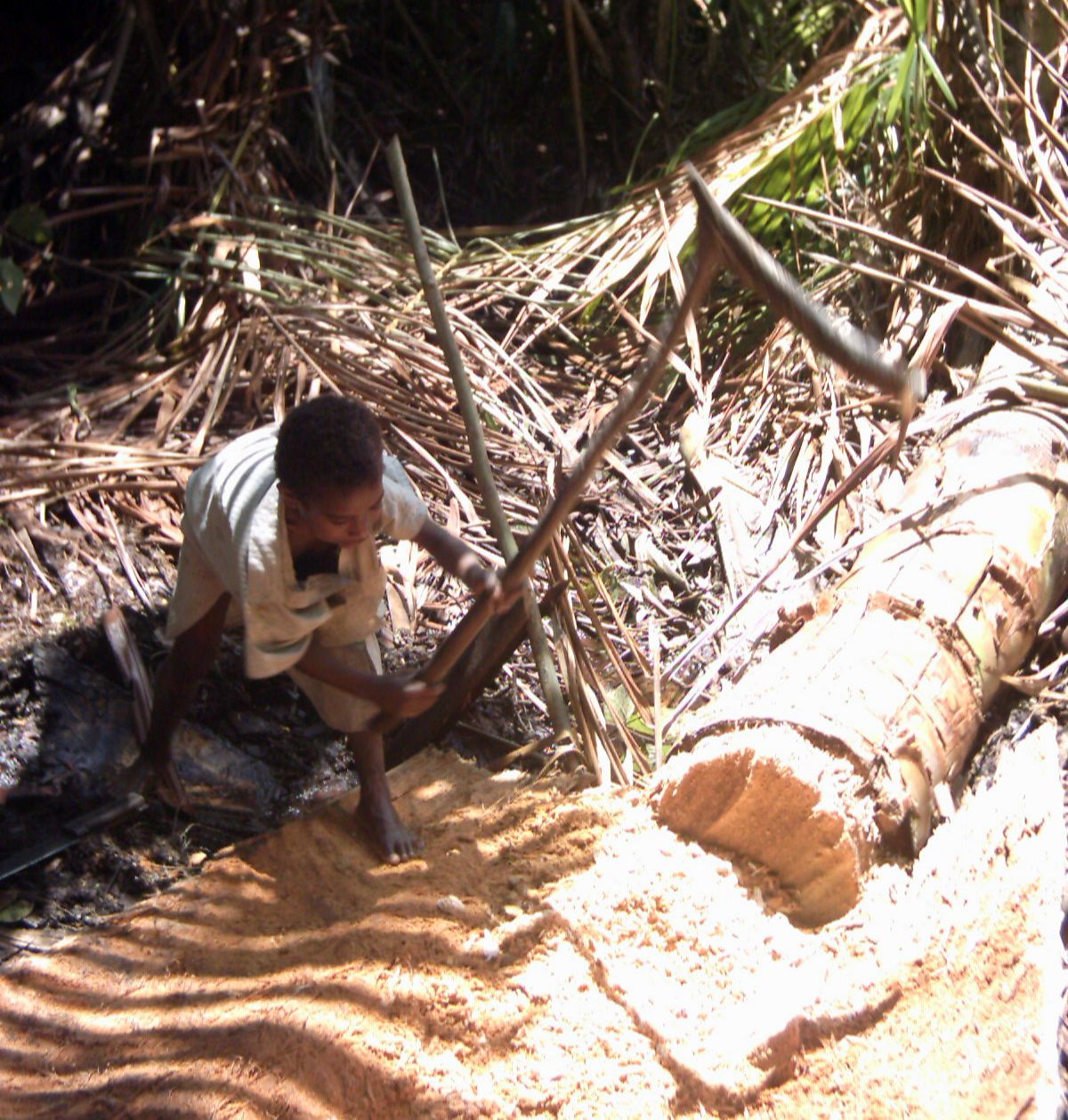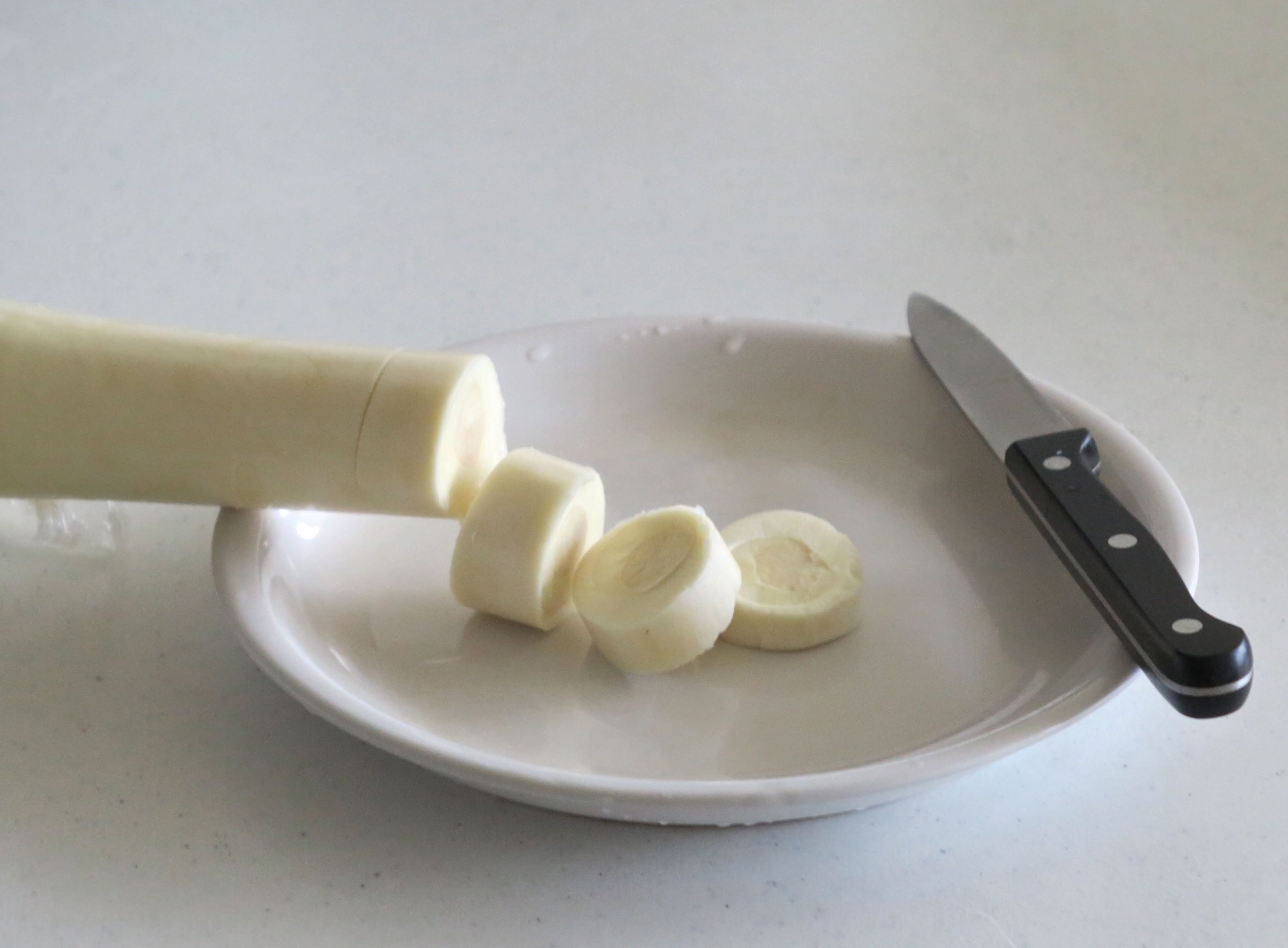|
Tapioca Balls
A tapioca pearl, also known as tapioca ball, is an edible translucent sphere produced from tapioca, a starch made from the cassava root . They originated as a cheaper alternative to sago in Southeast Asian cuisine. When used as an ingredient in bubble tea, they are most commonly referred to as pearls or boba. The starch pearls are typically in diameter. By adding different ingredients, like water, sugar, or some other type of sweetener like honey, tapioca pearls can be made to vary in color and in texture. Various forms of tapioca pearls include black, flavored, popping, mini, and clear. Tapioca pearls are commonly soaked in sugar syrup to make them sweet and chewy. In teas, they are often added for their texture, with the flavor being provided by the drink itself. The pearls are known as ''sabudana'' in the Indian subcontinent; they are used for sweet and savory dishes, such as sabudana khichri. In Brazil, the pearls are cooked with wine or other liquid to add flavor and are ... [...More Info...] [...Related Items...] OR: [Wikipedia] [Google] [Baidu] |
Sagu (dessert)
Sagu (or sagu de vinho — ) is a southern Brazilian dessert, made with tapioca pearls, sugar and red wine. It is typical of the state of Rio Grande do Sul, but also consumed in Santa Catarina (state), Santa Catarina and Paraná (state), Paraná. The sago balls were introduced to Latin America from Southeast Asia via the Spanish Empire, Spanish and Portuguese Empires. In Brazil, tapioca pearls are still known as ''sagu'', despite being made from the native South American cassava, and not sago Sago palm, palms. These pearls are used in this traditional dish, known as ''sagu de vinho'' ("wine sago"), or just ''sagu'', created in the Serra Gaúcha region, in the northeastern part of Rio Grande do Sul, but consumed in all the state. It is usually mixed with sugar and red wine and then served warm or cold, with crème anglaise on top of it (sometimes with Meringue, beaten egg whites with sugar). In some recipes, wine is mixed with grape juice, with the intent of making the dessert sw ... [...More Info...] [...Related Items...] OR: [Wikipedia] [Google] [Baidu] |
Halo-halo
''Haluhalo'' is a popular cold dessert in the Philippines made with crushed ice, evaporated milk or coconut milk, and various ingredients including side dishes such as ube jam (ube halaya), sweetened kidney beans or garbanzo beans, coconut strips, sago, '' gulaman'' (agar), pinipig, boiled taro or soft yams in cubes, flan, slices or portions of fruit preserves, and other root crop preserves. The dessert is topped with a scoop of ube ice cream. It is usually prepared in a tall clear glass and served with a long spoon. ''Haluhalo'' is considered to be the unofficial national dessert of the Philippines. ''Haluhalo'' is more commonly spelled as "''halo-halo''", but the former is the official spelling in the Commission on the Filipino Language's dictionary. The word is an adjective meaning "mixed ogether in Tagalog. It is a reduplication of the Tagalog verb ''halo'', which means "to mix". History The origin of ''haluhalo'' is traced to the pre-war Japanese Filipinos ... [...More Info...] [...Related Items...] OR: [Wikipedia] [Google] [Baidu] |
Es Doger
Es doger is an Indonesian coconut milk-based shaved ice beverage with pinkish color often served as a dessert. It is a specialty of Bandung, West Java. The main, or base, part is sugared sweet coconut milk-based ice in pink syrup, served with ''pacar cina merah delima'' (red tapioca pearls), avocado, cassava tapai, ''ketan hitam'' (black glutinous rice) tapai, jackfruit, diced bread and condensed milk. The condensed milk can be plain (white), or chocolate flavoured. Es doger gains its pinkish color from rozen (rose) syrup, cocopandan syrup, or pink food coloring. Es doger is commonly sold by travelling vendor carts in major Indonesian cities, mainly in Bandung, Jakarta, Malang and Surabaya. Similar drink The Malaysian '' ais Bandung'' (Bandung ice) of coconut milk ice with pink rose syrup is actually quite similar to es doger, albeit with lesser content. Both drinks has pinkish hue, and es doger is often associated with the city of Bandung. Yet the relations between the two dr ... [...More Info...] [...Related Items...] OR: [Wikipedia] [Google] [Baidu] |
Es Campur
Es campur (Indonesian for "mixed ice") is an Indonesian cold and sweet dessert concoction of fruit cocktails, coconut, tapioca pearls, grass jellies, etc. served in shaved ice, syrup and condensed milk. In Indonesia, es campur is sold from humble travelling trolleys to restaurants. For Indonesian Muslims, es campur and kolak are popular treats during Ramadan for iftar, often sold prior to breaking the fast. It is quite similar to es teler and es doger but the ingredients are different. The ingredients might vary, since the term ''campur'' means "mix". It may consist of coconut, sea weed, milk, syrup, jackfruit, and many others. See also Shaved ice § Regions, for similar shaved ice variations around the world. * Kakigōri: Japanese shaved ice * Bingsu: Korean shaved ice * Halo-halo: Filipino shaved ice * Tshuah-ping: Taiwanese shaved ice * Namkhaeng sai and O-aew: Thai shaved ice * Ais Kacang (ABC): Malaysian shaved ice * Grattachecca: Italian shaved ice popular in R ... [...More Info...] [...Related Items...] OR: [Wikipedia] [Google] [Baidu] |
Binignit
Binignit is a Visayan dessert soup from the central Philippines. The dish is traditionally made with glutinous rice cooked in coconut milk with various slices of sabá bananas, taro, ube, and sweet potato, among other ingredients. It is comparable to various dessert '' guinataán'' (coconut milk-based) dishes found in other regions, such as ''bilo-bilo''. Among the Visayan people, the dish is traditionally served on Good Friday of Holy Week. Names ''Binignit'' is also called ''giná-tan'' in Bikolano, ''tabirák'' in Mindanao Cebuano, ''alpahor'' in Chavacano, ''wit-wit'' in Hiligaynon, ''ginettaán, tambo-tambong, and paradusdos'' in Ilokano, ''ginat-an'' (or ''ginat-ang lugaw'') in Waray and Hiligaynon/Ilonggo, ''kamlo'' in western Iloilo, ''scramble'' in Tuguegarao City, ''linugaw'' in Bacolod, and ''eangkuga'' by Akeanons in Aklan. It is also sometimes called ''tabirak'' in Cagayan de Oro and Misamis Oriental. ''Binignit'' is considered a type of '' lugaw'' (ric ... [...More Info...] [...Related Items...] OR: [Wikipedia] [Google] [Baidu] |
Bilo-bilo
Pinaltok or Bilo-bilo is a Filipino dessert made of small glutinous balls (sweet sticky rice flour rounded up by adding water) in coconut milk and sugar. Then jackfruit, saba bananas, sweet potatoes, taro, and tapioca pearls or sago (regular and mini size pearls) are added. Bilo-bilo's origin is in Luzon. There are different recipe versions depending on what region in the Philippines it is from. Some recipes call for young coconut meat and some call for adding pandan leaves. This is usually and traditionally eaten hot while others prefer eating them cold after refrigeration. See also * '' Halo-halo'' *Sago pudding Sago pudding is a sweet pudding made by combining sago pearls with either water or milk and adding sugar and sometimes additional flavourings. It is made in many cultures with varying styles, and may be produced in a variety of ways. Southeast Asi ... References Philippine desserts Glutinous rice dishes {{dessert-stub ... [...More Info...] [...Related Items...] OR: [Wikipedia] [Google] [Baidu] |
Kaong
''Arenga pinnata'' (syn. ''Arenga saccharifera'') is an economically important feather palm native to tropical Asia, from eastern India east to Malaysia, Indonesia, and the Philippines in the east. Common names include sugar palm, areng palm (also aren palm or arengga palm), black sugar palm, and kaong palm, among other names. Description It is a medium-sized palm, growing to tall, with the trunk remaining covered by the rough old leaf bases. The leaves are long and broad, pinnate, with the pinnae in 1–6 rows, long and broad. The fruit is subglobose, diameter, green maturing black. The palm is remarkable in two ways; first it is fast growing. One at the conservatory of the New York Botanic Garden grew to a height of in 25 years. Secondly it has very long pseudo-spines which look dangerous, but are not; possibly an example of Batesian mimicry. Ecology ''A. pinnata'' suffers from the red palm weevil, ''Rhynchophorus ferrugineus'', . Page 247. and is one of its major host ... [...More Info...] [...Related Items...] OR: [Wikipedia] [Google] [Baidu] |
Landang
Landang is a processed starch product extracted from the inner trunk of the ''buli'' or ''buri'' tree ('' Corypha''), a type of palm native to the Philippines and other tropical countries. This tree only flowers once in its life and then dies. Landang is visually similar to shrunken, flattened sago. It is traditionally used in making ''binignit'' in the Visayas. Preparation The process is very similar in making sago. First, the buli palm is felled. The hard core can be reached by breaking the trunk open. The hard core is chopped into fragments that should be dried perfectly and hand crushed into powder form thereby turning it into flour. This process requires several rounds of pounding. This is then mixed with water to form the product. It can be stored for weeks or a few months. Uses Landang is essential in making the traditional Visayan binignit, a sweet rootcrop and banana stewed in coconut milk and brown sugar, usually eaten during the Lenten season in the Philippines whe ... [...More Info...] [...Related Items...] OR: [Wikipedia] [Google] [Baidu] |
Pearl Sago
Sago () is a starch extracted from the pith, or spongy core tissue, of various tropical palm stems, especially those of ''Metroxylon sagu''. It is a major staple food for the lowland peoples of New Guinea and the Maluku Islands, where it is called ''saksak'', ''rabia'' and ''sagu''. The largest supply of sago comes from Melanesia region, particularly Eastern Indonesia. Large quantities of sago are sent to Europe and North America for cooking purposes. It is traditionally cooked and eaten in various forms, such as rolled into balls, mixed with boiling water to form a glue-like paste ( papeda), or as a pancake. Sago is often produced commercially in the form of "pearls" (small rounded starch aggregates, partly gelatinized by heating). Sago pearls can be boiled with water or milk and sugar to make a sweet sago pudding. Sago pearls are similar in appearance to the pearled starches of other origin, e.g. cassava starch (tapioca) and potato starch. They may be used interchangeably i ... [...More Info...] [...Related Items...] OR: [Wikipedia] [Google] [Baidu] |
Glutinous Rice
Domestication syndrome refers to two sets of phenotypic traits that are common to either domesticated plants or domesticated animals. Domesticated animals tend to be smaller and less aggressive than their wild counterparts; they may also have floppy ears, variations to coat color, a smaller brain, and a shorter muzzle. Other traits may include changes in the endocrine system and an extended breeding cycle. These animal traits have been claimed to emerge across the different species in response to selection for tameness, which was purportedly demonstrated in a famous Russian fox breeding experiment, though this claim has been disputed. Other research suggested that pleiotropic change in neural crest cell regulating genes was the common cause of shared traits seen in many domesticated animal species. However, several recent publications have either questioned this neural crest cell explanation or cast doubt on the existence of domestication syndrome itself. One recent publica ... [...More Info...] [...Related Items...] OR: [Wikipedia] [Google] [Baidu] |
Heart Of Palm
Heart of palm is a vegetable harvested from the inner core and growing bud of certain Palm tree, palm trees, most notably the coconut (''Cocos nucifera''), juçara (''Euterpe edulis''), açaí palm (''Euterpe oleracea''), sabal, palmetto (''Sabal'' spp.), and Bactris gasipaes, peach palm. Heart of palm may be eaten on its own, and often it is eaten in a salad. There are palm varieties that have become domesticated farm species as an alternative to sourcing from wild palms. The main variety that has been domesticated is ''Bactris gasipaes'', known in English as peach palm. This variety is the most widely used for canning. Peach palms are self-Sucker (botany), suckering and produce multiple Plant stem, stems, with up to 40 on one plant. This lets producers lower costs by harvesting several stems from a plant while avoiding the death of the palm. Another advantage is that the peach palm has been selectively bred to eliminate the thorns of its wild cousins. Since harvesting is still ... [...More Info...] [...Related Items...] OR: [Wikipedia] [Google] [Baidu] |





